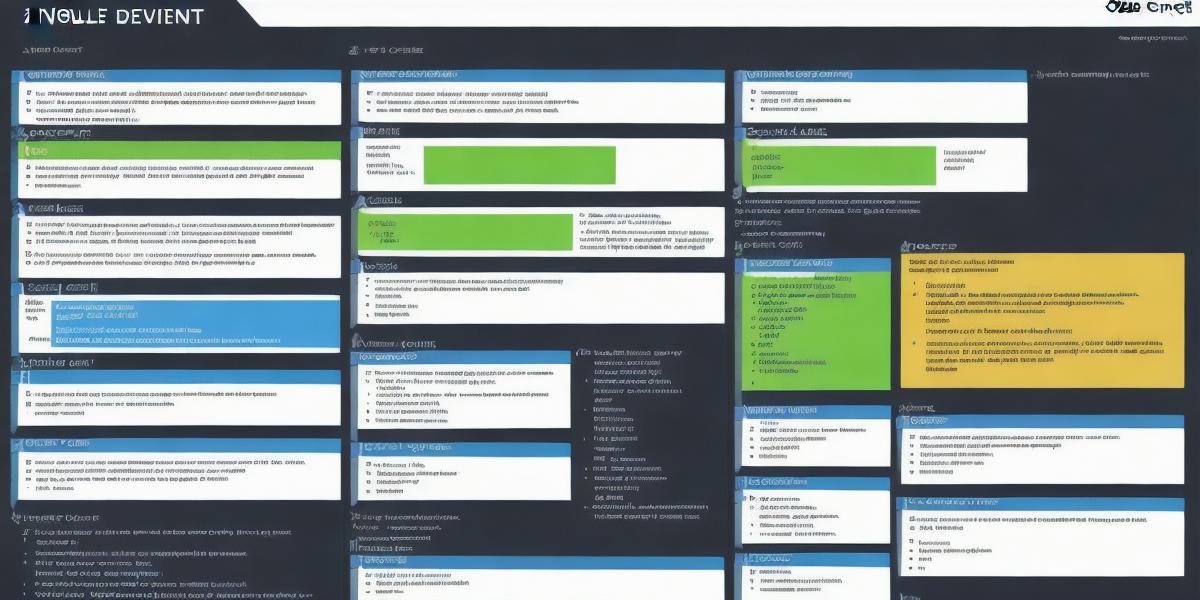Are you a game developer looking to create an effective game development document? Look no further! In this guide, we’ll cover everything you need to know about creating a comprehensive game dev document that will help you stay organized and on track throughout the development process.
Introduction
A game development document (GDD) is a crucial tool for any game developer. It outlines the project scope, objectives, and requirements, as well as the overall plan for achieving them. A well-crafted GDD can help you stay focused and on track throughout the development process, while also ensuring that everyone involved in the project is on the same page. In this guide, we’ll take a closer look at what goes into creating a game dev document and provide some tips for making sure your GDD is as effective as possible.
What Goes Into a Game Dev Document?

A game development document typically includes several key sections that outline the project scope, objectives, and requirements. These sections may include:
- Executive Summary: This section provides an overview of the project, including its objectives, target audience, and key features.
- Project Scope: This section outlines the specific tasks and deliverables that are required to complete the project.
- Game Design Document: This section includes detailed descriptions of the game’s mechanics, levels, characters, and other design elements.
- Technical Design Document: This section outlines the technical requirements for the game, including hardware and software specifications, as well as any programming languages or tools that will be used.
- Marketing Plan: This section outlines the marketing strategy for the game, including target audience, promotional activities, and expected sales.
- Timeline: This section outlines the project timeline, including key milestones and deadlines.
- Budget: This section outlines the estimated cost of the project, including labor, materials, and any other expenses.
Creating a Game Dev Document: Best Practices
Now that we’ve covered what goes into a game development document let’s take a look at some best practices for creating an effective GDD.
- Start Early: It’s important to start working on your GDD as early in the project as possible. This will give you time to gather all of the necessary information and ensure that everyone involved in the project is on the same page.
- Use Templates: There are many templates available online that can help you get started with your GDD. These templates can provide a helpful structure for organizing your thoughts and ensuring that you cover all of the key sections of the document.
- Include Visual Aids: Visuals can be a great way to illustrate your points and make your GDD more engaging. Consider including diagrams, flowcharts, or other visual aids to help illustrate your design ideas.
- Keep it Simple: It’s important to keep your GDD as simple and straightforward as possible. Avoid using overly complex language or terminology that may be difficult for others to understand.
- Make it Collaborative: Your GDD should be a collaborative effort, involving everyone involved in the project. Encourage feedback and input from team members to ensure that everyone is on the same page.
- Review and Update Regularly: As the project progresses, it’s important to review and update your GDD regularly to ensure that it remains relevant and accurate. This will help you stay organized and on track throughout the development process.
Real-Life Examples of Effective Game Dev Documents
Now let’s take a look at some real-life examples of effective game development documents to see how these best practices can be put into action.
Example 1: Uncharted 4
Uncharted 4 is a highly successful adventure game developed by Naughty Dog. The game’s developers created an extensive GDD that outlined the project scope, objectives, and requirements in detail. This GDD included sections on game design, technical specifications, marketing, and timelines, as well as detailed diagrams and visual aids to help illustrate the game’s mechanics and levels.
Example 2: The Legend of Zelda: Breath of the Wild
The Legend of Zelda: Breath of the Wild is another highly successful game that benefited from a well-crafted GDD.
